Is the call of the open water drawing you in? If you’re keen on exploring the vast world of kayaking, you’re probably excited to experience the thrill, excitement, and tranquility that comes with gliding through serene waterways and tackling challenging rapids. However, if you’re new to this sport, you might understandably be wondering about the costs involved in taking up kayaking as a recreational activity.
Before diving headfirst into the world of kayaking, it’s wise to be aware of the various expenses that come with it, from acquiring a suitable kayak and essential equipment to planning trips and joining group outings. In this article on “How much does kayaking cost” I’ll walk you through the different factors that contribute to the overall cost of kayaking, and offer tips on how to navigate these expenses so that you can pursue this exhilarating hobby without breaking the bank. So grab your paddle, and let’s explore the costs of kayaking together!
Contents
Contents
The Cost Of A Kayak in 2024
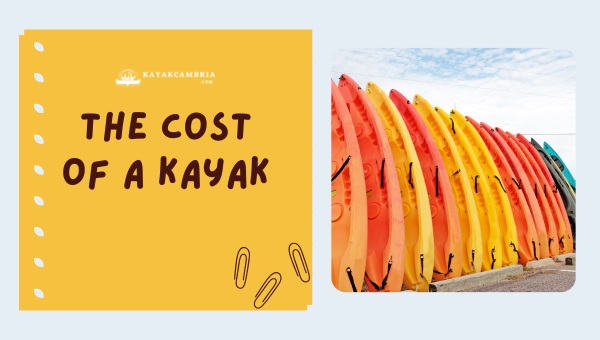
When embarking on the kayaking journey, the first and often most significant expense to consider is the kayak itself. There is a wide variety of kayak types on the market, each designed for specific purposes and catering to various budgets. In this section, I’ll outline the different types of kayaks and their respective price points.
Types Of Kayaks And Price Range
- Recreational Kayaks: These kayaks are designed for casual paddlers and are perfect for calm waters, such as lakes and slow-moving rivers. Expect a price range of $250 to $800.
- Touring Kayaks: Ideal for long-distance paddling and coastal adventures. These kayaks offer better performance and more storage space. The price range typically falls between $1,000 and $3,000.
- Whitewater Kayaks: As the name suggests, these kayaks are built for navigating fast-moving waters and rough rapids. Prices can range from $500 to $1,200.
- Fishing Kayaks: Designed to enhance the fishing experience, these kayaks come with added features such as fishing rod holders and built-in coolers. You can find fishing kayaks for $500 to $2,000.
- Inflatable Kayaks: Lightweight, portable, and easy to store, inflatable kayaks are great for occasional paddlers. These kayaks typically vary from $100 to $1,000.
- Tandem Kayaks: Built for two paddlers, tandem kayaks are perfect for couples or friends who prefer to paddle together. The price range for tandem kayaks is around $500 to $2,000.
Factors Affecting The Cost of a Kayak:
- Brand: Just like many other products, the quality and reputation of the brand can greatly influence the price of a kayak.
- Materials: Kayaks can be made from various materials such as polyethylene, composite materials, and thermoformed plastics. The choice of material impacts the durability, weight, and cost of the kayak.
- Design & Features: The overall design and additional features of a kayak, such as specialized storage compartments, rudders, or pedal-drive systems, can also affect the price.
For those on a tighter budget, there are alternative options to purchasing a brand-new kayak. Renting a kayak allows you to try different types and get a feel for your preferences without the commitment of ownership. Another option is to look for used kayaks, which can often be found on online marketplaces or in local outdoor outfitters. It’s essential to carefully inspect a used kayak for any signs of damage or wear before purchasing.
Equipment And Accessories Expenses in 2024

Before embarking on any kayaking adventure, having the right equipment and accessories is essential. This goes beyond the actual kayak; there are several pieces of gear that play a crucial role in ensuring a safe and enjoyable experience. Let’s dive into the various equipment and accessories you’ll need as well as the range of prices for each type.
1. Paddles
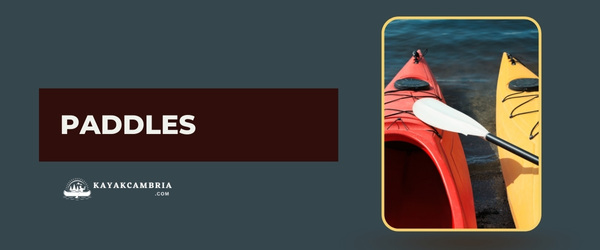
The most important piece of gear, besides the kayak itself, is a paddle. Paddle prices can range from around $30 for a basic model up to $400 for a high-quality, lightweight paddle made from carbon fiber. When choosing a paddle, consider factors such as the paddle’s weight, length, and blade shape. A lighter paddle can make a huge difference in your overall kayaking experience, reducing fatigue and allowing for more efficient strokes.
2. Life Jackets And Safety Equipment

Safety should always be a top priority when kayaking. Life jackets, or personal flotation devices (PFDs), are mandatory while on the water. PFDs can cost between $30 and $150. Higher-end models often provide extra features like pockets and adjustable straps for a more comfortable fit. A good life jacket should not only be comfortable but also properly fitted and suitable for the type of kayaking you plan on doing.
Other essential safety gear includes a whistle, helmet, and a throw rope. Helmets are particularly crucial for whitewater kayaking where there’s a higher risk of capsizing or hitting obstacles. These items can also vary in price, so be sure to do thorough research and prioritize safety over saving money.
3. Dry Bags And Waterproof Containers
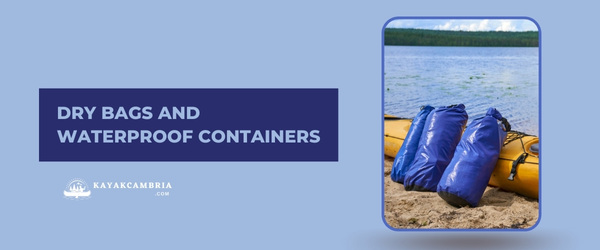
When kayaking, it’s crucial to keep your belongings dry. Dry bags and waterproof containers are available at various price points, ranging from around $10 for a simple waterproof phone pouch, to over $100 for large, high-quality dry bags.
The difference in quality is often evident in the materials used and the overall durability. Expensive models are likely to be made with high-grade materials that ensure better, long-lasting protection for your gear.
4. Spray Skirts And Cockpit Covers

For those taking up sea or whitewater kayaking, a spray skirt is an essential piece of gear to keep water out of the cockpit. Prices for spray skirts can range from $30 for a basic model to over $200 for top-of-the-line products. The key factors to consider when comparing quality are the materials used, the fit, and the ease of attaching and detaching the skirt from the cockpit.
Cockpit covers, useful for transporting and storing your kayak, can cost anywhere from $20 to $100. A high-quality cover will provide a snug fit and be made from durable materials to protect your kayak from the elements and any potential damage.
5. Clothing And Footwear
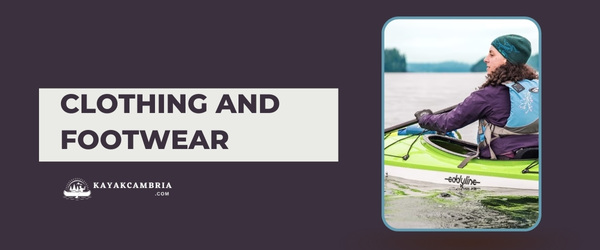
Investing in appropriate clothing and footwear for kayaking is vital for comfort and safety. Paddling-specific clothing, such as wetsuits, drysuits, and rash guards, can range from $50 to several hundred dollars, depending on the brand and materials. Generally, high-quality clothing is more comfortable, and durable, and offers better protection against cold water and weather conditions.
Footwear for kayaking varies in price as well, with options such as neoprene boots, water shoes, or sandals costing anywhere from $20 to over $100. Better quality footwear is likely to be more comfortable, offer better grip, and last for a longer time.
As with any gear, it’s important to strike a balance between affordability and quality. Prioritize purchasing quality safety equipment, and always remember to do thorough research and read reviews before making a decision, as this can help ensure you’re getting the best value for your money.
6. Kayak Seats
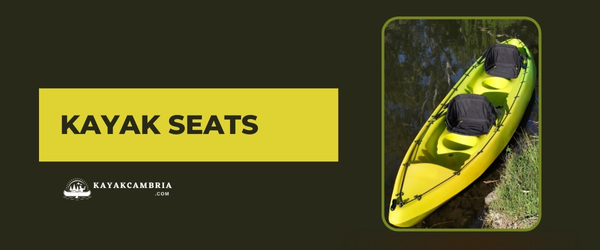
Kayak seats are another vital accessory for comfort during your paddling adventures. While kayaks usually come with a preinstalled seat, you might want to upgrade to an adjustable and cushioned seat that offers better support and overall comfort.
Basic seats can start as low as $25, while high-quality models may cost up to $250. When evaluating the quality of a kayak seat, consider the cushioning material, ergonomics, adjustability, and durability.
7. Bilge Pump
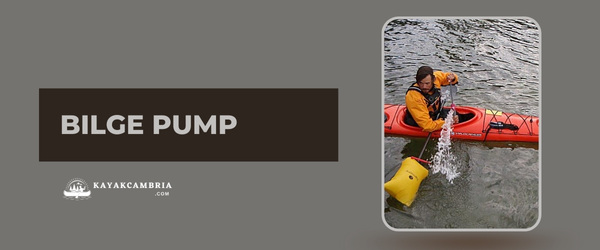
In some kayaking situations like rough waters or heavy rain, you will need a bilge pump to remove excess water from your vessel. Prices for bilge pumps range from around $15 for a basic handheld model to over $100 for an automatic, high-capacity one.
When looking at bilge pumps, factors like pumping capacity, weight, and ease of use may determine the difference between lower-cost pumps and their high-quality counterparts. Investing in a reliable bilge pump is essential to ensure your safety and comfort on the water.
8. Fishing Gear
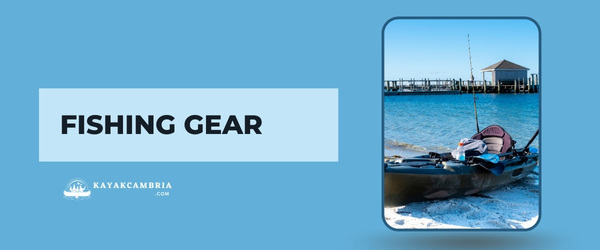
For those who enjoy kayak fishing, additional gear will be necessary to accommodate your angling adventures. These accessories may include rod holders, tackle boxes, anchor systems, and fish finders.
Rod holders can cost anywhere from $10 for a basic clamp-on model to over $100 for an adjustable, high-quality holder. Tackle boxes and storage options can range between $20 and $200, depending on their size and features. Meanwhile, anchor systems vary from $20 to several hundred dollars, based on the type of system and its capacity. Lastly, fish finders can cost anywhere from $50 for a simple, entry-level model to over $1,000 for a high-end, feature-rich device.
9. Indoor Storage

Paddle floats, essential for self-rescue during a capsize, vary in price from around $20 for a basic model to over $50 for a high-quality, inflatable paddle float.
No matter your chosen kayaking gear, it is essential to balance your budget with your safety and comfort on the water. Prioritize necessary safety equipment, and consider other options such as renting or purchasing used gear to save on costs. Always research the products you are interested in, to ensure you’re getting the best value for your money.
Kayaking Lesson and Certification Fees in 2024
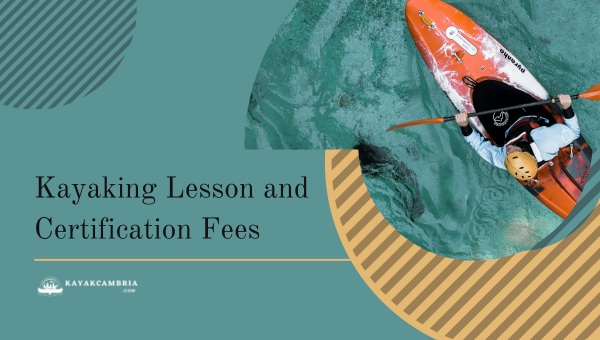
Learning to kayak not only ensures that you create enjoyable and safe experiences on the water but also gives you an opportunity to develop the necessary skills to excel in the sport. Kayaking lessons and certification programs are available to make sure you receive proper training and guidance, covering a range of skill levels – from beginners to advanced paddlers.
Formal Kayaking Lessons
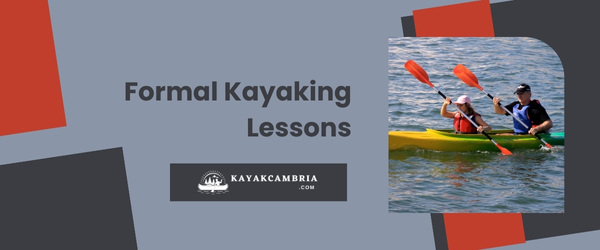
For starters, formal kayaking lessons are a great idea, as they are usually taught by experienced instructors who can provide personalized feedback and monitor your progress. The cost of such lessons depends on factors such as the location, duration, and level of instruction. On average, group lessons can range from $50 to $150 per lesson, with private lessons costing a bit more.
Certification Programs
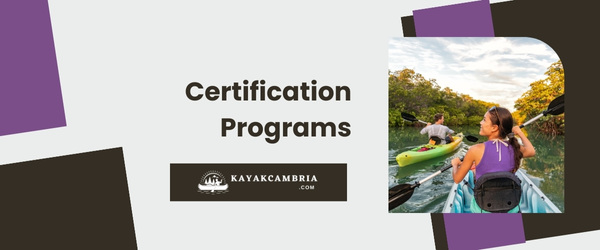
If you’re interested in pursuing kayaking as a long-term hobby or even as a competitive sport, you may want to consider official certification programs. These programs, such as the ones offered by the American Canoe Association (ACA), provide in-depth training and assessments that can ultimately lead to certifications confirming your ability to paddle safely and effectively. Costs for these certification programs can range from $200 to $600, depending on the level and complexity of the program.
Self-Taught Options
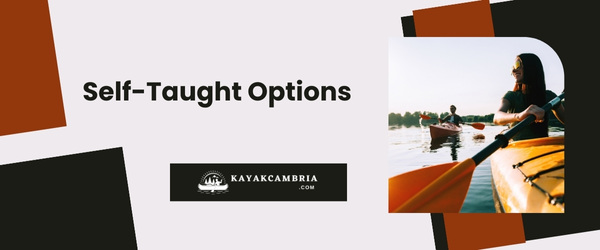
Alternatively, there are numerous self-paced teaching options available for those looking to learn kayaking on a budget. Online resources, such as tutorial videos on YouTube, instructional articles, and guidebooks can be great starting points for learning the basics. Just remember that while these resources can be helpful, it is still highly recommended to have some formal or in-person training to ensure proper technique and safety precautions.
Finding Affordable Instruction
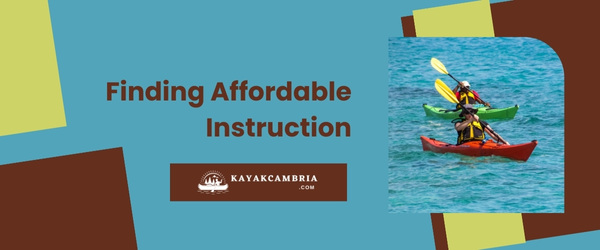
To find affordable kayaking instruction, you can:
- Look for local kayaking clubs or groups that may offer discounted classes as a membership benefit.
- Keep an eye out for seasonal sales or promotional offers at nearby kayaking schools.
- Research organizations in your area offering grant-funded programs or sliding-scale fee structures.
- Utilize online communities and forums to ask fellow kayakers for recommendations of affordable learning opportunities.
By taking the time to explore various options, you will be able to find suitable kayaking lessons and certification programs that suit your budget.
Transportation And Storage Costs in 2024

When it comes to kayaking, it’s not just the kayak and gear itself that contribute to the overall cost. The transportation and storage of your equipment are essential factors to consider as well.
1. Roof Racks And Trailers
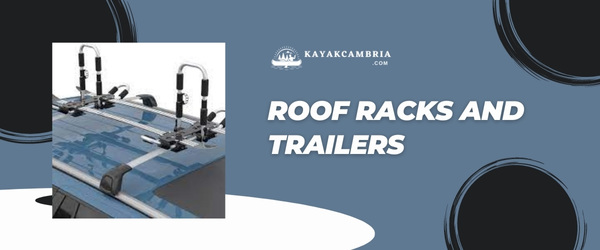
To get your kayak from your home to your favorite paddling spot, you’ll need a reliable method of transporting it. Roof racks and trailers come in various styles and prices, so start by researching which option best suits your needs and vehicle type. It’s important to invest in sturdy, reliable transportation equipment to keep both your kayak and vehicle safe during transit.
- Roof racks: Prices can range from $100 to $500. Make sure to choose one specifically designed for kayaks and compatible with your car’s make and model.
- Trailers: Prices vary from $400 to well over $1,000, depending on the design and capacity. A good trailer will have adequate space for your kayak and ensure its security during travel.
2. Storage Solutions
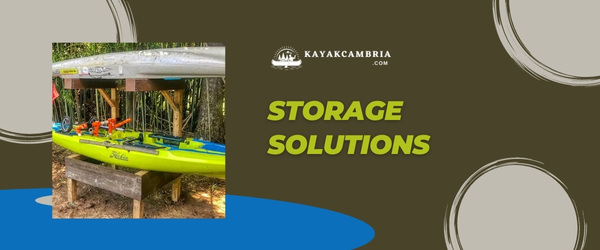
Now, let’s talk about storing your kayak when not in use. Just like the transportation equipment, your storage solution will heavily depend on your living situation and available space. Here are a few options to consider:
- Garage Storage: If you have a garage or dedicated storage space, a simple wall or ceiling mount could do the trick. These mounts usually cost between $50 and $200.
- Outdoor Storage: If you don’t have indoor space, you can use an outdoor kayak cover or a small storage shed—prices range from $50 to $500.
- Rental Storage: If neither of those is an option, consider renting a storage unit specifically for your kayak. Prices fluctuate depending on location and unit size.
Remember, proper storage will help extend your kayak’s life and maintain its condition, so it’s worth investing both time and money in finding the right storage solution for your needs.
Saving Tips
- To save on transportation costs, consider asking friends or family with compatible vehicles if they could help transport your kayak.
- Keep an eye on second-hand markets for used roof racks or trailers—you might find a great deal.
- Check with local kayaking clubs or groups for shared storage facilities or garage space at a reduced cost.
Launch And Permit Fees in 2024
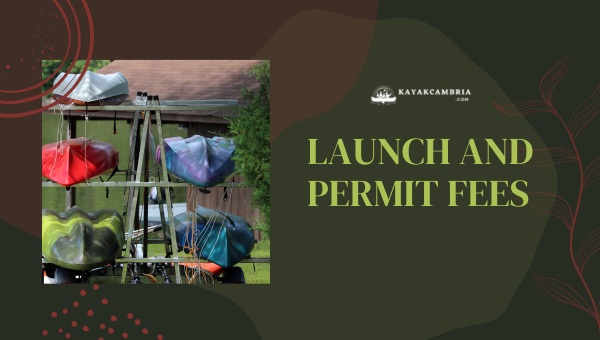
One aspect of kayaking that you might not immediately consider is the launch and permit fees that can be associated with accessing certain waterways or facilities. While many public locations are free, some may charge a fee to help maintain the facilities, preserve the surroundings, or support local conservation efforts. It is essential to be aware of these costs before heading out for a day on the water.
Access To Waterways And Facilities
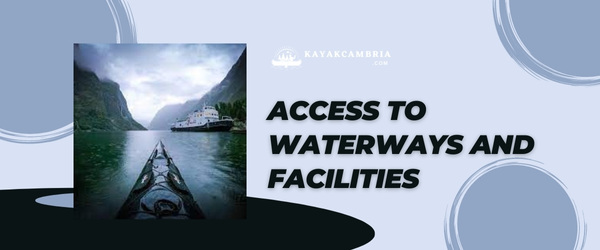
Not all bodies of water or kayak launching sites are free to use. Many public parks, state or national, may charge an entrance fee or a separate launch fee for watercraft. Some private lakes, rivers, or marinas might also require a fee for launching your kayak. Keep in mind that these fees can vary depending on the location, time of year, or even the day of the week.
Researching Permit And Fee Requirements
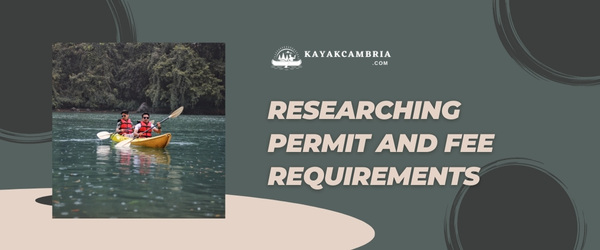
Before embarking on your kayaking adventure, it’s important to research the specific location you plan to visit. Most parks or facilities have websites with detailed information on launch and permit fees. In some cases, you might be able to purchase permits online. When planning, also consider annual or season passes, which could be more cost-effective if you plan to kayak frequently in that area.
Resources For Free Or Low-cost Kayaking Locations
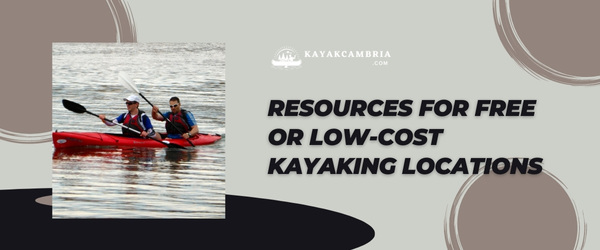
To save on launch and permit fees, take advantage of community resources and online forums dedicated to kayaking. Local paddlers often share information on their favorite launch spots and any fees associated with them. These resources can also be valuable for discovering hidden gems that might not be as well-known or crowded.
With a bit of research and planning, you can find the right balance between the cost and convenience of launch sites and permits, ensuring that you can fully enjoy your time kayaking without breaking the bank.
Trip Expenses and Group Outings
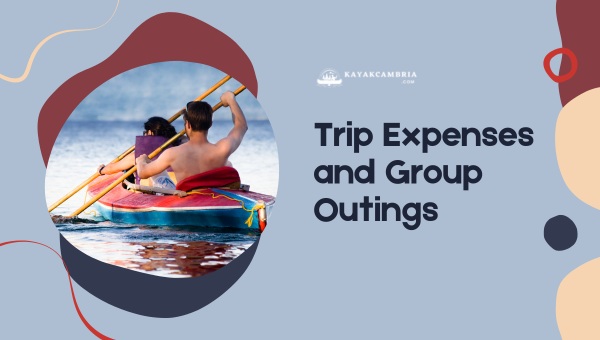
When planning a kayaking adventure, you should also account for associated trip expenses. These can include travel costs (fuel or transportation), accommodations (camping or hotel stays), and meals. It’s crucial to create a budget and plan accordingly to enjoy your kayaking experience without a financial burden.
One efficient way to cut costs on kayaking trips is by joining a local kayaking club or participating in group outings. Not only does this offer a sense of camaraderie and shared knowledge, but it can also provide financial benefits. For example, accommodations and transportation costs can be split among members, making it more cost-effective for everyone involved.
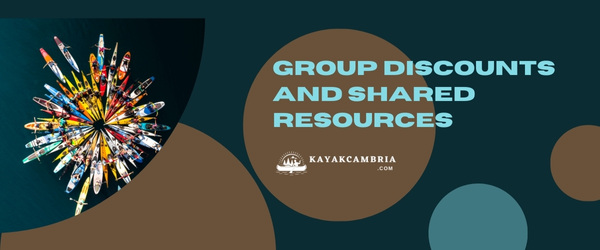
Another advantage of joining a group is the potential for different discounts. Kayaking clubs may have access to lower fees for water access permits, lessons, or gear rentals. Members can also share equipment, meaning you don’t need to invest in every accessory immediately. This sharing of resources can significantly reduce your overall kayaking expenses.
Budget-Friendly Trip Ideas

If you’re eager to save money while still enjoying a memorable kayaking adventure, research more budget-friendly options. Camping in public parks or national forests is a cost-effective alternative to expensive lodgings. Likewise, opt for simple, home-cooked meals instead of dining out during your trip. As you become more familiar with kayaking locations, you’ll learn about hidden gems and free access points that offer stunning experiences without breaking the bank.
Remember that pursuing a hobby like kayaking doesn’t mean you need to splurge on every aspect of it. Careful planning and resourcefulness can make it an affordable and enriching activity suitable for all budgets.
Balancing Your Kayaking Budget
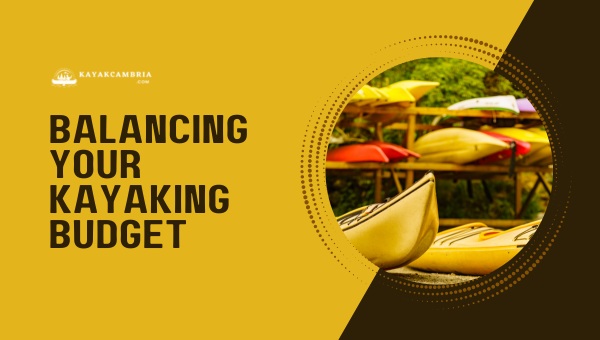
As you venture into the world of kayaking, it’s essential to consider your budget and prioritize expenses. Balancing your kayaking budget takes careful planning and research, but it’s possible to find cost-effective solutions without sacrificing safety and enjoyment. In this section, I’ll share practical tips to help you manage your kayaking expenses responsibly.
Prioritize Your Needs And Preferences

First and foremost, consider what aspects of kayaking are most important to you. Are you looking for the best possible equipment, or can you make do with more affordable options? Is learning from a top-notch instructor crucial to your experience? List down your priorities and allocate your budget accordingly.
- High-quality equipment: Saving money on low-quality gear might end up costing you more in the long run, as it may need frequent replacements or cause discomfort during your outings. Invest in durable and reliable equipment that suits your needs.
- Affordable education: While proper instruction is vital, that doesn’t mean you have to break the bank. Look for community organizations, local clubs, or online resources that offer lessons at a lower cost.
- Travel and trip expenses: Plan your trips wisely. Opt for budget-friendly accommodations and consider self-catering to save on meal costs. Join group outings to share expenses such as transportation or permits.
Practical Ways To Save On Kayaking Expenses

- Shop around: Always compare prices before making a purchase. Use online price comparison websites and check for discounts, sales, and promotions at multiple retailers.
- Consider second-hand equipment: Buying used kayaks and gear can save a significant amount of money. It’s a great way to get started in the sport without committing to the full price of a brand new kayak. Check online marketplaces, local classified ads, or kayak groups for possible deals.
- Rent equipment: If you’re just starting, renting a kayak and equipment might be a cost-effective option. As you gain experience, you can better assess which type of kayak you’d like to eventually invest in.
- Join a local kayaking club: Many clubs offer access to discounts on equipment, rentals, storage, and education. They also provide great opportunities to network with fellow kayakers and share resources.
With thoughtful planning, finding the right balance in your kayaking budget is achievable. Remember that investing in safety and enjoyment is a worthy pursuit, and always prioritize your well-being while exploring this exciting sport.
Is Kayaking A Costly Hobby?
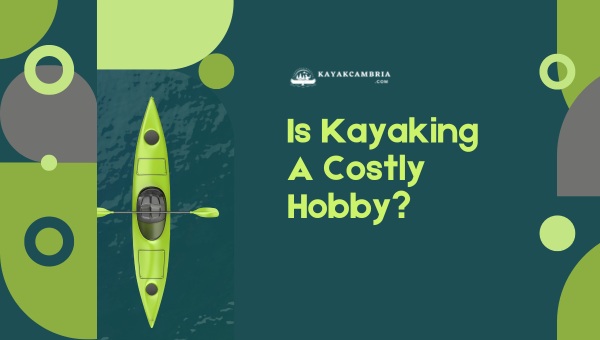
When it comes to recreational activities, the costs can vary greatly depending on your interests and how far you want to take them. So how does kayaking stack up in terms of expenses? The answer is that it can be as costly or as budget-friendly as you make it.
Initial Investment
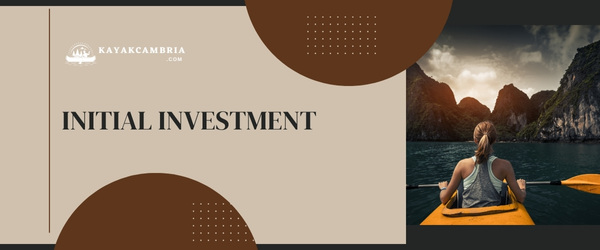
The initial investment in a kayak, gear, and lessons can be somewhat expensive, but it doesn’t have to break the bank. By shopping around, prioritizing your needs, and considering used or rental equipment, you can lower the initial costs considerably.
Ongoing Expenses
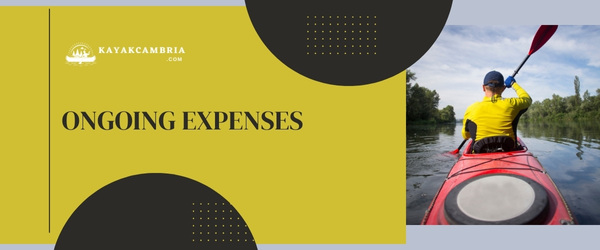
Just like with any hobby, there are ongoing expenses associated with kayaking. This includes equipment maintenance, replacing worn-out gear, and fees for permits, launches, or rental storage spaces. However, many of these expenses can be minimized or controlled by making smart choices and keeping an eye out for deals and discounts.
Opportunity For Cost Savings

Kayaking can be particularly budget-friendly if you take advantage of opportunities to save. For instance, you can join a local kayaking club to share costs and resources among fellow enthusiasts. Additionally, look into visiting free or low-cost paddling locations, and plan cost-effective kayaking trips by carefully managing travel expenses and accommodations.
Comparing To Other Activities
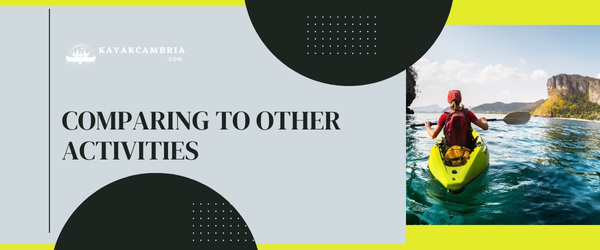
When compared to other hobbies such as golf, skiing, or sailing, kayaking’s costs are on the lower end. However, it is worth noting that kayaking still requires a significant but justifiable initial investment.
Frequently Asked Questions
1. Can I try kayaking without purchasing any equipment?
Yes, many places offer kayak rentals, which include essential equipment like a kayak, paddles, and a personal flotation device. This is a great way to experience kayaking for the first time without making any significant investments.
2. What type of kayak should I buy?
There are various types of kayaks designed for specific purposes, such as recreational, touring, inflatable, and fishing. When buying a kayak, consider your intended use, skill level, and personal preferences to make an informed decision.
3. How do I choose the correct size and style of paddle?
Paddle selection depends on the type of kayaking activity, your size, and personal preferences. When choosing, consider factors like paddle length, materials, and blade shape. Trying different paddles in-store or renting them first can help you find the right fit.
4. Is formal instruction necessary to start kayaking?
While it is possible to learn basics from tutorials or friends, formal instruction is recommended for beginners. Certified trainers can teach correct techniques and safety measures to ensure an enjoyable and secure kayaking experience.
5. How should I transport my kayak to the water?
Options for transporting your kayak include roof racks, trailers, or even inflatable and folding kayaks that fit inside your vehicle. Select the method best suited to your needs and budget, and always secure your kayak during transport.
6. Is it safe to kayak alone?
The safest approach is to kayak with a buddy or group, especially if you’re inexperienced. However, if you choose to kayak solo, be sure to inform someone about your plans, have proper safety equipment, and stay within your skill level.
7. Do I need any special clothing for kayaking?
While no specific attire is required, it’s best to wear quick-drying, moisture-wicking clothes that provide comfort and mobility. A hat, sunglasses, and sunscreen are crucial for sun protection, and a wetsuit or drysuit may be needed in cold water situations.
Conclusion
It is evident that the costs involved in kayaking can vary greatly based on several factors such as the type of kayak, equipment, lessons, and the overall approach one takes towards this exciting hobby. Engaging in thorough research, being resourceful, and setting realistic expectations can greatly contribute to making kayaking an affordable and fulfilling pastime.
While it is tempting to aim for the cheapest options, prioritizing your safety and comfort should never be compromised. By taking the time to explore different opportunities, such as joining kayaking clubs, purchasing second-hand gear, and seeking cost-effective storage solutions, you will be able to strike the right balance between managing your finances and enjoying the sport to the fullest.
Remember, the key to truly enjoying kayaking lies in planning, preparedness, and smart budgeting. With these tips in mind, you’re now equipped to dive into the world of kayaking without breaking the bank. Happy paddling!

